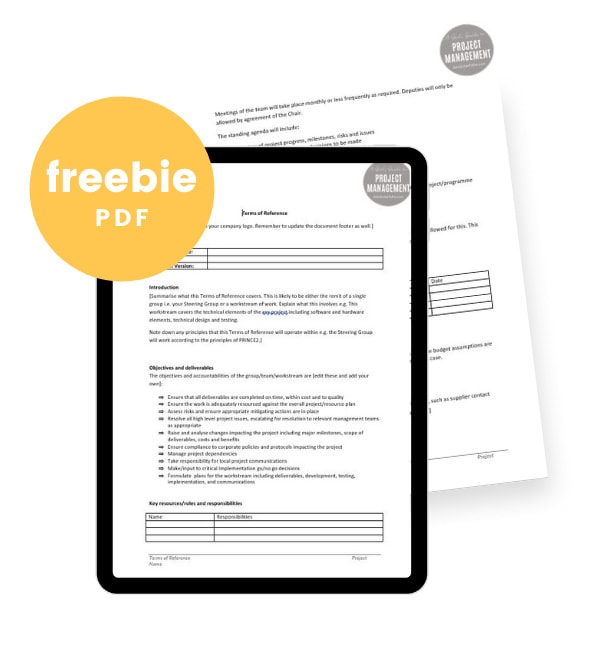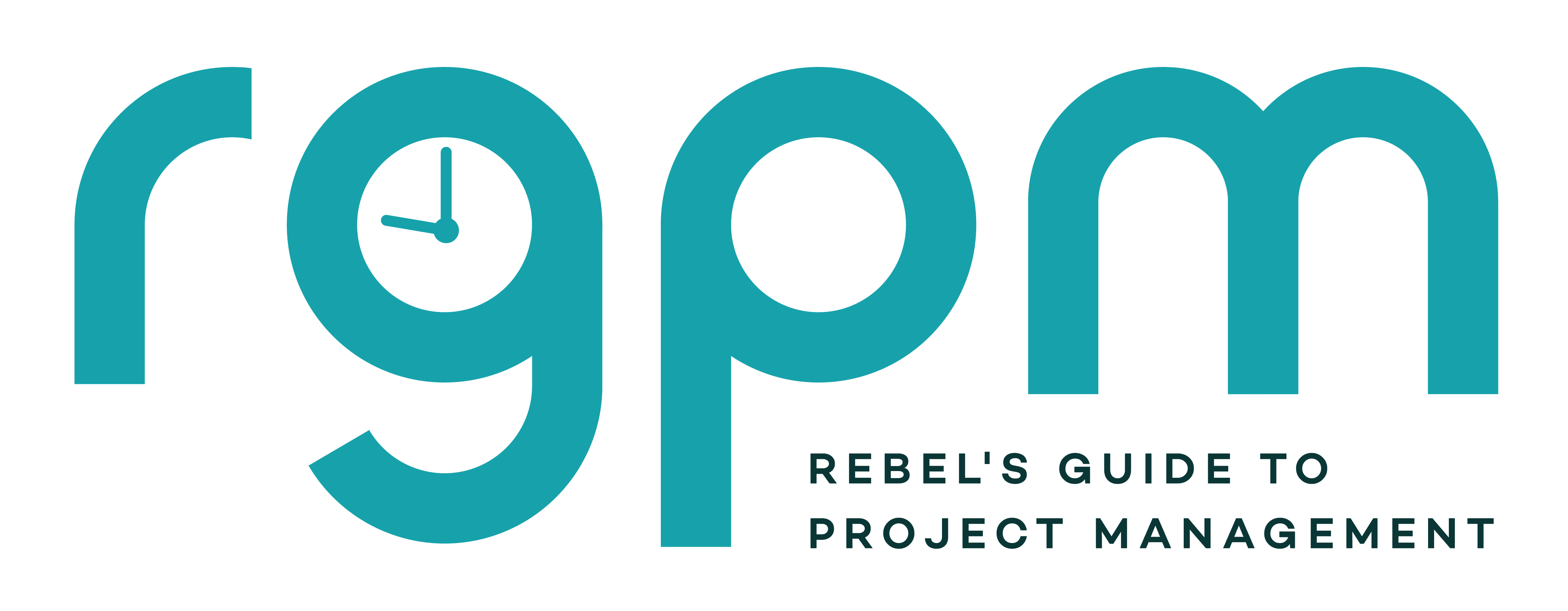How to Improve Meetings with a Terms of Reference
Are your meetings a bit long and unstructured, regardless of how much effort you put into making a good agenda?
We used to have meetings like that until we implemented a terms of reference for the meeting series. Now everyone knows what the meeting is for and what their role in it is.
You can create a meeting terms of reference using the template structure below and streamline your committees. Ready to get started?
What to include in the meeting ToR
You’re creating a terms of reference that sets out everything attendees need to know about the meeting, so your ToR should be comprehensive. However, if it’s too long, no one will read it.
Here are the elements you should include, but feel free to review the list and add or takeaway items to make it relevant to your organization.
Meeting purpose
Start with a clear outline of what the meeting is about and why the group comes together. For example:
The purpose of this group is to review, assess, and plan the marketing direction for the organization, providing the strategic direction for campaigns for the current year.
The goal here is to create a common understanding of why they are all in the room together. Set the scope of the engagement with some overarching goals so everyone knows the point of the meeting.
Responsibilities
Responsibilities are different from the purpose. List the joint responsibilities for the group as bullet points. For example:
- To agree on the marketing priorities for the forthcoming year on a rolling basis.
- To review quarterly progress against the plan.
- To adjust the annual plan as required based on campaign performance.
- To communicate the plan and results to relevant stakeholders across the organization.
- To approve international marketing spend.
- To review campaign results and share best practice.
Phrase each responsibility as a verb and aim for six to eight points. There’s no need to pack the page with them; they just provide some specifics on what the group does.
Attendees
List the people who will attend the meeting. It’s easier to write down the job roles than the names of the people, as you’ll find people move job roles and drop in and out more frequently than you expect. Job titles in the ToR mean you have to update it less often as key stakeholders change.
Start the list with the name/role of the person who is the Chair. If it is a project-related meeting, this is likely to be the project sponsor, but it could also be the board or exec member responsible for this particular area of the business.
You might have a rolling chair, where different people chair each time. Or you might want to specify which role takes the Chair in the Chair’s absence.
End the list with the person who is the Secretariat – we use this term as it’s less loaded than Secretary and more descriptive than ‘note-taker’, but use whatever you want. This role is the individual who collects agenda items before the meeting, collates the papers for the meeting, takes meeting minutes, and shares the output afterward.
If you’ve got space and your governance is a bit complicated, you could include a committee structure diagram that shows how this forum relates to other decision-making forums in the business. Often decision requests get cascaded up if the decision is too big for one group to make.
Quorum
If you are a decision-making meeting (and you should be, it’s not really worth having ToR for non-decision-making meetings), then establish what will make your meeting quorate.
Quorum refers to the number of people present to make a decision. If your group is 20 people, and only one shows up, can they make binding decisions on behalf of the group? Probably not. Quorate in that situation might be 15. It might be 20. But set a limit so everyone knows.
You can have variations on quorum. For example, you might say that the meeting is quorate if 10 people are present, including at least one board member.
Voting rights
Provide some direction to committee members about how decisions get made. Does everyone attending the meeting have voting rights, should there be anything to vote on?
The most frequent is yes. If they’re in the meeting, they deserve to have a say about decisions. However, you might want to add a note that says any additional attendees, like guest speakers, will not have voting rights.
Delegation of authority
Include a mention of DoA (delegation of authority). This is how much delegated authority the meeting has and is normally a financial amount.
For example, perhaps the portfolio decision meeting can approve projects up to a spend of $250k, but anything over that has to go to another forum for approval.
Perhaps a project meeting can approve changes that have an impact of less than three weeks’ duration and under 5% of total budget, but anything above that goes to the program manager for approval.
Some meetings may not have a delegation of authority at all. You may still be able to make decisions or recommendations, but not those that commit the organization to spending money.
Frequency and duration
We write frequency and duration into the ToR templates for our various decision-making committees, but it really is just a guide to the time commitment. It enables attendees to know what they are signing up for, but I find it often changes.
For example, one meeting we set up this year started as two hours. Now, they can conclude business in half an hour sometimes – they’ve got really efficient!
However, you should include frequency (how often the group will meet) and duration (how often the group will meet) in the document.
Inputs and outputs
What does this meeting need in order to be successful?
If it’s a decision-making forum, like a portfolio office project intake discussion, you will need the business cases or papers for each project so a decision can be made about whether to do it (or not).
Other inputs could include:
- Campaign results
- Operational feedback
- Submissions for decisions
- Advisory papers
- Budget data.
Outputs are likely to be:
- Committee reports of formal decisions made
- Plans or future decisions (to bring back to another meeting)
- Summary updates and changes.
Basically, list out the things that should be prepared in advance and the things that are created afterward.
Note that some of the inputs and outputs might be confidential materials, so if you feel it’s worth mentioning, include a sentence that says as much. Personally, I would leave this out and write it on the materials themselves, but it might be relevant for you.
Agenda
Obviously, the agenda will change from session to session but include a summary agenda in the ToR. Here’s an example:
- Actions from the previous meeting
- Proposals and decisions
- Summary of actions from this meeting
- AOB
That’s pretty generic, but you get the idea. The purpose of the meeting will drive what is discussed. A renumeration committee may have accounts to review each quarter, and salary changes to approve, for example.
The best ToR format
Previously, I would have said that the best format for a ToR was a Word document, version controlled, and stored somewhere everyone could access.
These days I work with stakeholders who prefer slides, and we create ToRs in slide deck format. I say deck, but it’s one slide. These documents don’t have to be long.
Use bullet points and lists. Avoid unnecessary descriptions about what each section is for and get straight to the details.
Ultimately, choose whatever format you think people will read!
Get your ToR signed off
Once your ToR is drafted in whatever format you decide is best, make sure the chair of the meeting approves it. They should sign it off, and then it can be circulated to others in the meeting.
I would share a draft with the whole group and solicit feedback before creating a second draft and working with the meeting chair to finalise it.
Next steps
Now you’re ready to draft your meeting Terms of Reference document. You can probably do a good draft right now without input from anyone else, but make sure you do get other people’s thoughts as you pull it together.
Get a ToR template as a starting point and go from there.
It’s a simple document that you can put together in a couple of hours but it will make a huge difference to your committee meetings and keep you much more structured. Give it a go!

